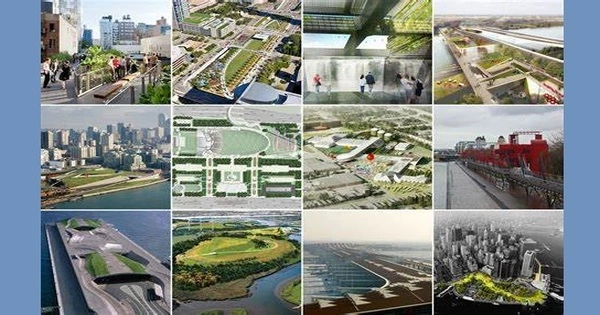Landscape urbanism is an urban planning idea that contends that the city is built from linked and ecologically rich horizontal field conditions rather than the arrangement of items and buildings. It is an interdisciplinary approach to urban design and planning that integrates landscape architecture, ecology, and urbanism to produce sustainable and resilient communities.
Landscape urbanism, like Infrastructural Urbanism and Ecological Urbanism, prioritizes function above form and employs systems-based thinking and design methodologies. It arose in reaction to the problems faced by urbanization, climate change, and environmental deterioration.
In the mid-1990s, the term ‘landscape urbanism’ first surfaced. Since then, the term “landscape urbanism” has been used in a variety of contexts, although it is most commonly associated with a postmodernist or post-postmodernist response to the “failures” of New Urbanism and the shift away from complete visions and demands for modern architecture and urban planning.
Here are some key principles and concepts associated with landscape urbanism:
- Integration of Landscape and Urban Design: It aims to blur the traditional distinctions between urban design and landscape architecture. It emphasizes the significance of natural and man-made landscapes in defining the design and function of cities.
- Ecological Thinking: This method emphasizes ecological concepts and the restoration of natural systems in the urban environment. It aspires to build cities that are in harmony with nature rather than in conflict with it.
- Adaptive Planning: It promotes adaptable and flexible planning solutions that can adjust to changing social, economic, and environmental factors. It prioritizes adaptability and resilience across time.
- Multifunctional Spaces: The design of urban spaces should serve multiple functions and be adaptable to different uses. For example, a park might also serve as a stormwater management system or provide habitat for wildlife.
- Transit-Oriented Development: It often promotes transit-oriented development, which encourages the use of public transportation and the reduction of automobile dependency. This can lead to more sustainable and walkable cities.
- Community Engagement: Engaging the community in the design and planning process is a fundamental aspect of landscape urbanism. It values input from residents and stakeholders to ensure that projects meet the needs and aspirations of the people who live in the city.
- Green Infrastructure: Green infrastructure, such as green roofs, permeable pavements, and urban trees, is an important concept in landscape urbanism for managing stormwater, improving air quality, and providing other environmental advantages.
Landscape urbanism, as a whole, signifies a transition away from traditional, top-down urban planning approaches and toward more holistic, ecologically sensitive, and community-oriented methods of city design and development. It acknowledges the interaction between the built environment and the natural world and aspires to make cities more livable, resilient, and sustainable.
















